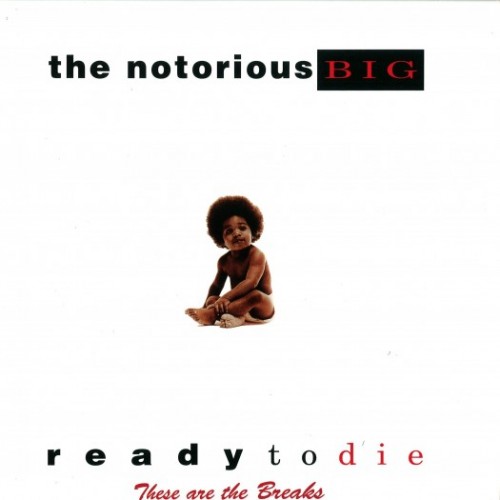‘Ready to Die’, Biggie Smalls, and the Prison Industrial Complex…
1994 marks the year that the Notorious B.I.G.’s (a.k.a. Biggie Smalls) debut album “Ready to Die” was released. I am thinking about this today because I read an article noting that the baby who appeared on the album cover is now 18 years old. That was shocking to me because I can’t believe that so many years have gone by since this important album first hit the scene.
It is worth taking a moment to consider this album cover in our current social context of heightened racialized surveillance and increasing state violence against people of color. The cover depicts a tiny black baby in front of a white background that threatens to swallow him up, with the words “Ready to Die: These are the Breaks” written underneath. It still takes my breath away. I remember the impact that this cover had on me back in 1994. I felt an overwhelming sense of sadness sweep over me as I thought about the message that was being sent to all of us. Biggie had been “ready to die” since his birth. I thought of him at the time and still do as a stand-in for so many young black men who have expressed similar sentiments (though not as eloquently). Tragically, only three years after his debut album was released, Biggie was gunned down at the age of 24.
As I continue to think about the ways that the state controls and disciplines black and brown bodies, the “Ready to Die” album cover provides another lens for understanding these issues. If Biggie proclaims himself, “Ready to Die” then the rest of us as spectators are off the hook for caring about his humanity. It seems that the album cover is both social commentary on the cheapness of young black men’s lives in America but also perhaps unwittingly and ironically its message elicits the viewer’s consent for state violence against young black men. The baby appears as just another killable black body rather than as an “innocent” one. After all, black bodies are synonymous with criminality, poverty, and disposability. This is something that I often write about on this blog.
The album came at a historical moment of increased visibility of blackness through hip hop culture along with higher levels of racialized surveillance and state violence against black people through the war on drugs and other tough on crime policies. Within this historical and cultural context, young blackness was and remains inherently deficient and the black body is inherently violent. What meanings would we ascribe to an album cover, that would have for example, had a white baby in front of a black background with the words “Ready to Die” underneath? Think about whether this would elicit the same emotions or generate the same type of analysis. The white body is inscribed as inherently “innocent”; this is why the taking of white life is seen as so much more tragic and important. The state is meant to “punish” black bodies and to “protect” innocent white ones.
Amos Wilson (1990) has written something that rings true in the context of analyzing the album cover and provides us with a frame through which to understand it:
“In the eyes of White America an exaggeratedly large segment of Black America is criminally suspect. This is especially true relative to the Black male. In the fevered mind of White America, he is cosmically guilty. His guilt is existential. For him to be alive is to suspected, to be stereotypically accused, convicted and condemned for criminal conspiracy and intent. On the streets, in the subways, elevators, in the “wrong” neighborhood (p.37).”
These are not pretty words but they are true ones. One cannot understand the current manifestation of the prison industrial complex without interrogating the notions of blackness that naturalize state violence against black and brown people. Some people will protest and say “no, you are painting with a broad brush.” My answer is that the evidence for my claims is all around us. The proof is in the millions of black and brown bodies being fed through the prison industrial complex yearly.
I leave you with one of the most memorable songs off “Ready to Die” called “Suicidal Thoughts.” It appears fittingly as the final song on the album.

